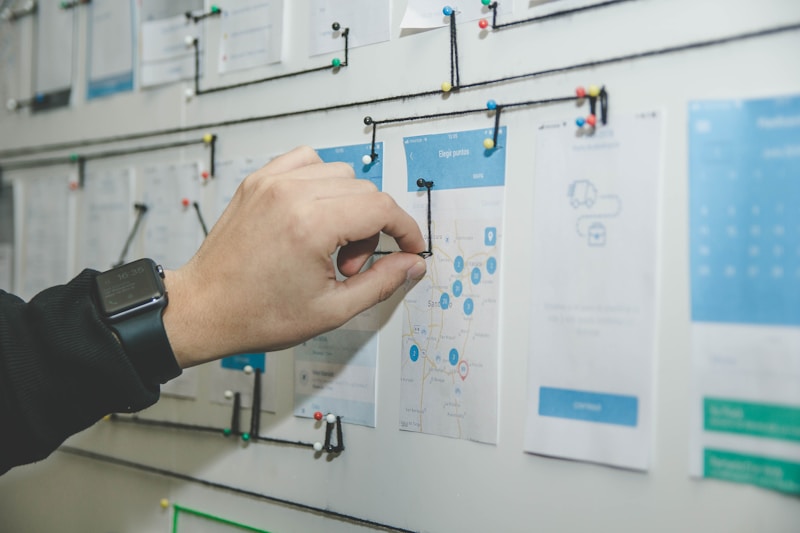Engaging Designers in Inventory Planning: A Comprehensive Guide
Engaging Designers in Inventory Planning: A Comprehensive Guide
Understanding the Role of Designers in Inventory Planning
Effective inventory planning is a crucial aspect of modern businesses, and when it comes to optimizing this process, engaging designers can make a significant impact. Designers bring their creativity and problem-solving skills to the table, helping companies create a functional, visually appealing inventory system. This article delves into how engaging designers can enhance inventory planning, the benefits it brings, and the strategies to effectively collaborate with designers.
The Importance of Inventory Planning
Inventory planning is vital for businesses to maintain the right stock levels, reduce costs, and improve customer satisfaction. By having an organized inventory system, companies can avoid stockouts and overstock situations which can lead to financial losses. Involving designers in this process can introduce innovative solutions and streamline operations.
Benefits of Engaging Designers in Inventory Planning
- Enhanced Visual Organization: Designers can create systems that are not only functional but also visually intuitive, making it easier for employees to locate and manage inventory.
- User-Friendly Interfaces: With a designer's touch, inventory management software can become more accessible, featuring user interfaces that improve usability and reduce training time.
- Creative Problem Solving: Designers are trained to think outside the box, which can lead to innovative inventory solutions that traditional methods might overlook.
- Brand Consistency: Engaging designers ensures that the inventory system aligns with the company’s brand identity, reinforcing brand recognition among customers.
Key Steps in Collaborating with Designers for Inventory Planning
Engaging designers effectively involves clear communication and structured collaboration. Here are key steps to consider:
| Step | Description |
| 1. Define Objectives | Clearly outline the goals of the inventory planning project to ensure all parties understand what needs to be achieved. |
| 2. Identify Key Designers | Choose designers who possess relevant experience in inventory systems or supply chain management. |
| 3. Regular Communication | Establish regular check-ins to ensure the project is on track and to discuss any adjustments needed. |
| 4. Gather Feedback | Solicit feedback from your team on the designer's proposals to ensure the solutions meet operational needs. |
Best Practices for Engaging Designers in Inventory Planning
In order to maximize the effectiveness of including designers in inventory planning, consider the following best practices:
- Emphasize Collaboration: Foster a culture of collaboration between designers and stakeholders in inventory management. This can help to create solutions that meet both aesthetic and functional requirements.
- Leverage Technology: Utilize design software and tools that can help visualize inventory systems, making it easier for teams to understand and implement changes.
- Set Milestones: Establish project milestones to measure progress and maintain momentum throughout the inventory planning process.

Common Challenges When Engaging Designers
While there are many benefits to involving designers in inventory planning, several challenges can arise:
- Miscommunication: Clear communication channels are crucial. Misunderstandings can lead to designs that do not meet operational needs.
- Cost Concerns: Hiring skilled designers might increase initial costs, but the long-term benefits often justify the investment.
- Resistance to Change: Employees may resist new systems. Training and showcasing the benefits of design enhancements can help ease this transition.
Case Studies: Successful Integration of Designers in Inventory Planning
To illustrate the benefits of engaging designers in inventory planning, here are two case studies:
Case Study 1: A Retail Giant’s Inventory Overhaul
A leading retail company faced issues with their inventory tracking system, which was cumbersome and outdated. They decided to engage a team of designers to revamp the interface. The designers introduced a streamlined dashboard that provided real-time analytics and simplified inventory management processes. As a result, the company reported a 25% increase in efficiency and a significant reduction in stock discrepancies.
Case Study 2: A Tech Startup's Smart Inventory Solution
A tech startup specializing in e-commerce struggled with inventory visibility. They incorporated designers into their inventory planning process to create a more engaging user interface for their application. The new design not only improved user experience but also integrated advanced inventory tracking features. Consequently, user retention improved, and customer satisfaction increased substantially.
Future Trends in Inventory Planning with Designers
Looking ahead, several trends are emerging in inventory planning that underscore the role of design:
- Increased Automation: With advancements in technology, the integration of automated systems designed by skilled designers will enhance efficiency.
- Data Visualization: Designers will play a critical role in designing software that provides data visualization tools, making inventory data more accessible and understandable.
- Focus on Sustainability: Designers are increasingly being tasked with creating sustainable inventory solutions that minimize waste and promote eco-friendly practices.
Conclusion
Engaging designers in inventory planning is a strategic move that can yield significant benefits, including improved efficiency, user satisfaction, and brand alignment. By understanding the importance of collaboration, adhering to best practices, and anticipating challenges, businesses can harness the full potential of their inventory systems. As inventory management continues to evolve, leveraging the creative insights of designers will become increasingly essential. For companies looking to stay competitive, a thoughtful integration of design into inventory planning will be a game-changer.
Recommendations: Regular evaluation of your inventory system, open communication with designers, and active involvement of key stakeholders will enhance collaboration and lead to impactful designs. Embrace the change to optimize your inventory planning processes and create a more efficient operation.
